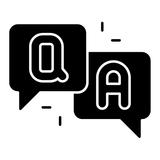FAQs about Personal Loans

Personal loans are among the most widely used financial products across the globe, helping individuals meet a range of needs — from consolidating debt and paying for education to handling medical expenses or funding travel. Unlike secured loans, which require collateral such as property or vehicles, most personal loans are unsecured and rely on creditworthiness. Interest rates, eligibility criteria, and repayment terms vary depending on the lender, country, and applicant’s financial profile.
This page addresses the most common questions people have about personal loans, offering clarity on how they work, what to consider before applying, and global best practices.
1. What is a personal loan?
A personal loan is a type of credit provided by banks, credit unions, or online lenders that can be used for almost any purpose. Borrowers receive a lump sum upfront and repay it in fixed installments over a set term, usually ranging from 1 to 7 years.
2. How do personal loans differ from credit cards?
Credit cards are revolving lines of credit that allow continuous borrowing up to a limit, while personal loans provide a fixed amount that must be repaid in regular installments. Personal loans often have lower interest rates compared to credit cards, especially for borrowers with good credit.
3. Do I need collateral for a personal loan?
Most personal loans are unsecured, meaning you do not need collateral. However, secured personal loans exist where assets like savings accounts or vehicles may be pledged to get lower interest rates.
4. What can I use a personal loan for?
You can use a personal loan for debt consolidation, medical bills, weddings, travel, education, or even home renovations. Some lenders restrict using personal loans for business or investment purposes, so it’s important to check terms before borrowing.
5. How is the interest rate determined?
Interest rates depend on factors such as your credit score, income, existing debts, loan amount, and repayment term. Borrowers with excellent credit typically receive the lowest rates. Rates vary significantly by country — for example, U.S. rates may range from 6% to 36%, while in developing economies rates can be higher.
6. What documents are required for applying?
Most lenders require proof of identity, proof of income (like salary slips or tax returns), address verification, and credit history. Online lenders may streamline this process with digital verifications.
7. Can I get a personal loan with bad credit?
Yes, but options may be limited. Borrowers with poor credit scores may face higher interest rates or need a co-signer. Alternatives such as secured loans or credit-builder loans might also be available.
8. How long does loan approval take?
Traditional banks may take a few days to weeks, while online lenders often approve and disburse funds within 24–72 hours, depending on the applicant’s profile.
9. What are the risks of taking a personal loan?
Risks include high interest charges, late payment penalties, and potential credit score damage if you miss payments. Taking on debt beyond your repayment capacity can also lead to financial stress.
10. How can I improve my chances of approval?
Maintain a healthy credit score, reduce existing debt, provide accurate documentation, and apply only for amounts you can realistically repay.
11. Are personal loans better than payday loans?
Yes. Personal loans typically have lower interest rates and longer repayment terms, while payday loans carry extremely high costs and short repayment windows, often trapping borrowers in debt cycles.
Personal loans can be a practical solution when managed responsibly. Before applying, carefully compare interest rates, fees, and repayment terms. Always borrow only what you need and ensure the monthly installments fit comfortably within your budget.




